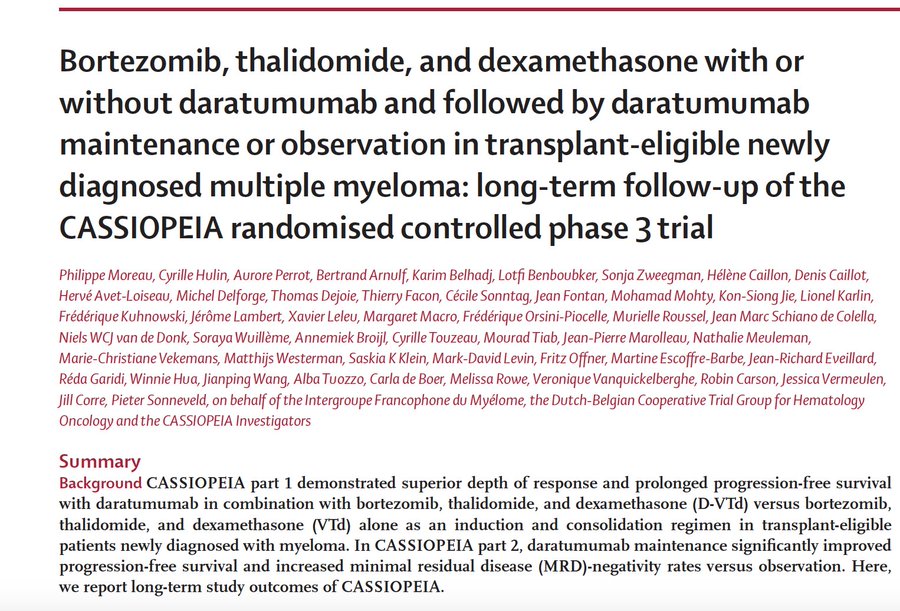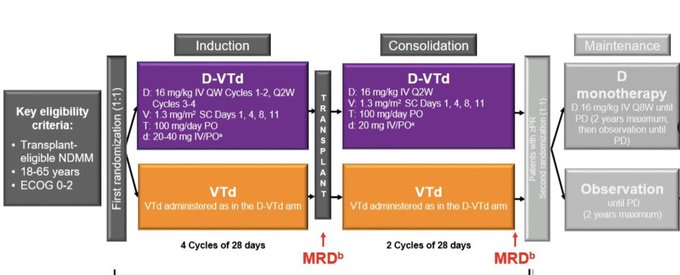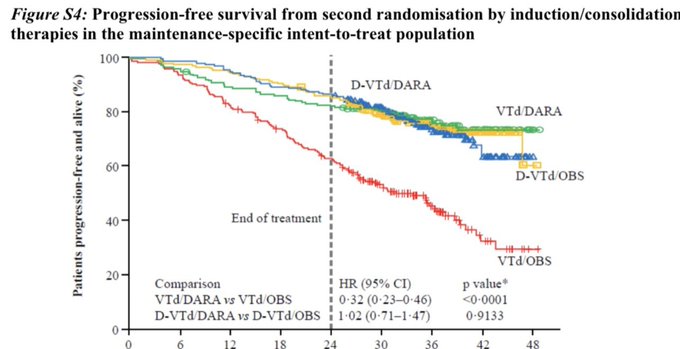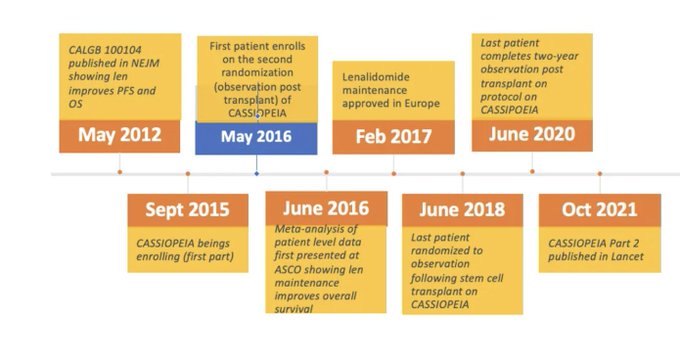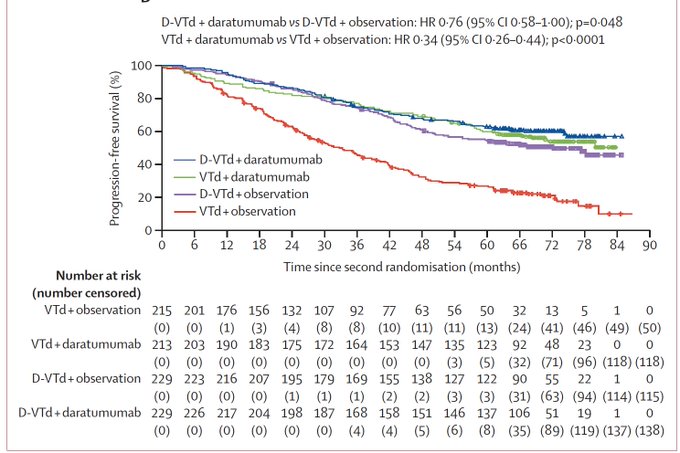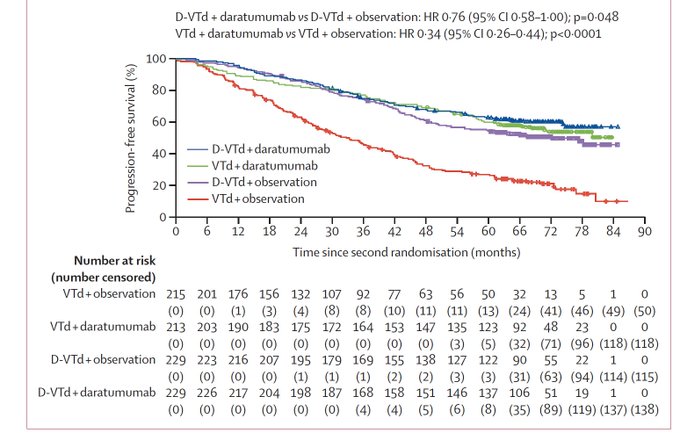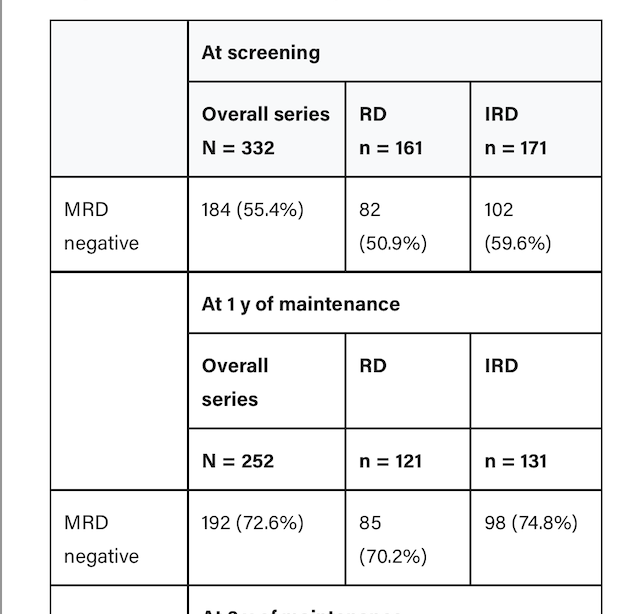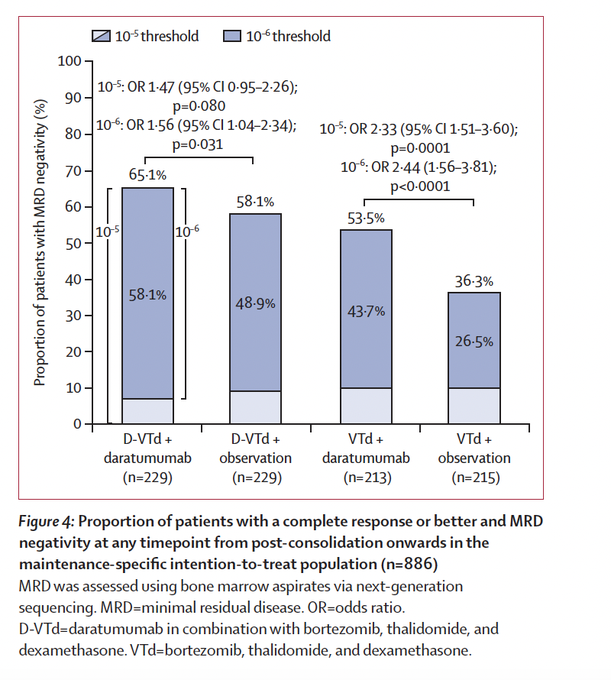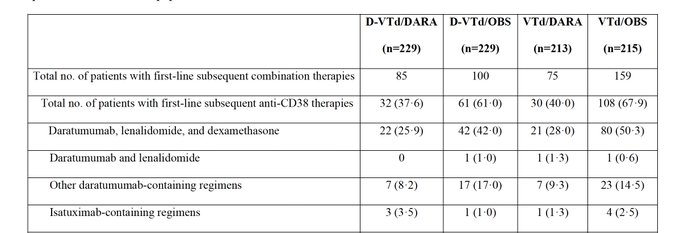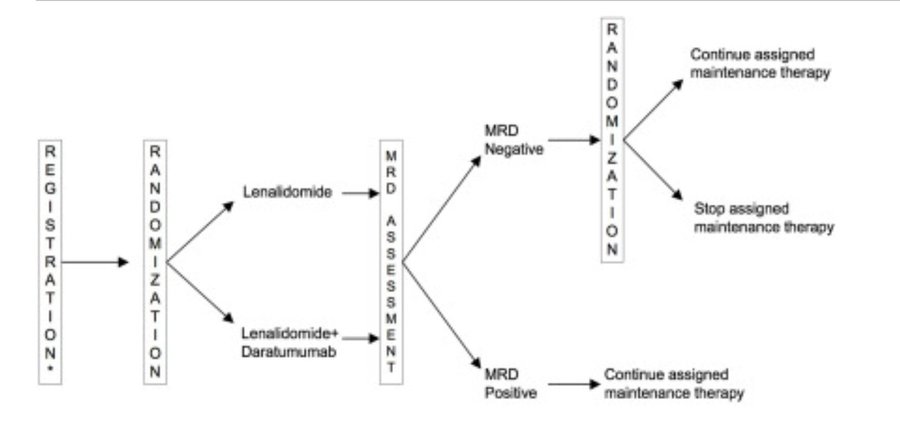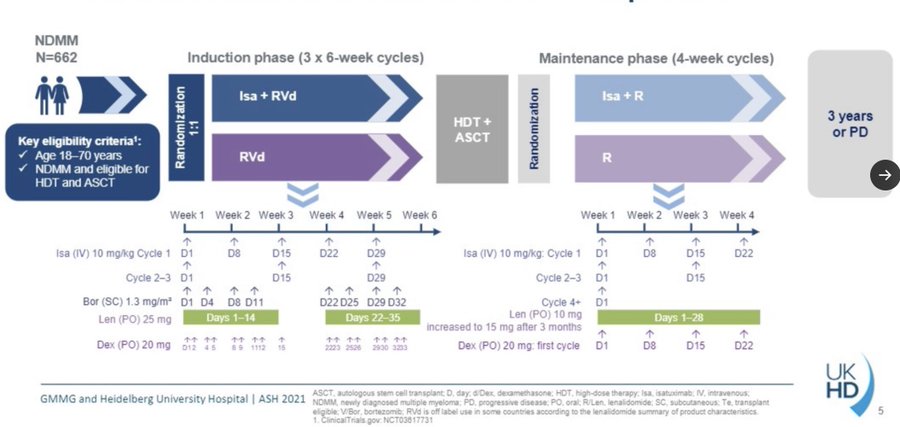“A critical appraisal of the long-term follow-up of CASSIOPEIA trial, daratumumab maintenance, and maintenance in general.
An educational thread.
Non-paywalled link to pub.
The CASSIOPEIA trial offers a trove of learning, because it had 2 randomizations.
1) A randomization of 4 versus 3 (D-VTd versus VTd)
2) A randomization of dara maintenance versus obs.
As such, it allows a clean assessment of value of dara in induction and/or maintenance.
Previous results had shown that
- D-VTD improved PFS relative to VTd
- Dara maintenance improved PFS, but only in those that had not received dara during induction the VTd arm.
This long-term follow-up now gives us some additional answers.
(That red VTd/Obs curve is tragic)
Some key things to consider:
Was observation an appropriate control arm in maintenance?
Considering that it was known that len maintenance improved PFS in 2012 (and endpoint of this trial was PFS)it is tragic that this trial continued to randomize to observation until 2018.
Hence, the comparison should have been to dara versus len.
This injustice aside, the trial does allow a ‘clean’ assessment of role of dara, although clean does not mean ethical in this case. So what does this long-term follow-up show?
There does now appear to be a modest PFS benefit to dara-VTd+dara maint compared to D-VTD+obs.
The PFS curves however do not appear to be split until after 36 months of follow-up (!)
The confidence interval hits 1, and the p value is barely significant.
The value of dara in those who did not receive dara maintenance is very apparent and clear, a whooping difference in the PFS curves (see difference between red line and green line).
Why is this the case?
I don’t think that the conclusion is that dara only works if given once in disease course (induction versus maintenance). Instead, this is a testament to the fact that maintenance works well when there is a lot of residual disease, and its role diminishes with better induction.
The value of dara maintenance in those that have received Dara-VTd is marginal (~delta of 10% PFS at 7 years of follow-up).
You would have to give patients years of extra therapy now (compared to a treatment holiday) to slightly delay chance of needing more therapy later.
Although there do not appear to be substantial imbalances in censoring, these results are fragile (thanks Tomer Meirson for explaining) The number of of people available for follow-up are small, and even a few extra patients censored can affect the results and make them negative.
We know that len maintenance improves MRD negativity. As an example, in GEM 2014 trial prior to maintenance, MRD negativity rates (at 10^-5) were 50.9% prior to maintenance. With len/dex maintenance, at 1 year MRD negativity rates increased to 70.2%.
The tragic control arm of this trial (VTD>obs) only had a MRD negativity (10^-5) of 36% at any point! Had these patients gotten len maintenance, the MRD negativity and PFS would have been better in this arm, and maybe dara would not shown any benefit relative to len.
Although post-protocol therapy was better than some historical myeloma trials, every single patient in VTD>Obs arm should have gotten dara upon progression.
Every single patient. Only 108/159 patients received dara in VTD/obs arm upon progression.
The overall survival benefit seen here with dara is therefore hard to apply to patients in the US, because OS benefit was only seen in the context of patients not receiving any maintenance therapy, and then a substantial minority not receiving dara upon progressing.
Even if we take these fragile PFS results as real, it does not appear that dara maint is preventing early progressions (curves only split after 3-4 yrs). As PFS1 does not corelate well with OS in myeloma, it is exceedingly unlikely that this PFS benefit will translate to OS.
I suspect that PFS benefit seen with dara in those with Dara-VTd induction is driven by those who had residual disease.
Not everyone receiving quads achieves MRD negativity, and those with significant residual disease probably do benefit (in terms of PFS) from maintenance.
Future trials will isolate the role of maintenance dara (or isa) in addition to (as opposed to instead of) maintenance len.
S1803 and GMMG HD-7 awaited.
I have no proof that maintenance dara is any worse or better than len. If len was suspected to such a test (len vs no len with quad induction), I doubt len would show better results.
I suspect that dara is at least as good (for PFS) and prob better from a QOL perspective.
My thoughts:
– I doubt maintenance upgrades OS in quad era
– I doubt maintenance upgrades even PFS in those who achieve MRD negativity early
– If PFS is goal- some sort of maintenance therapy necessary in those with MRD positivity
– In high-risk disease, dont rely on single MRD timepoint!
Bortezomib and Lenalidomide maintenance has never had good data, and I would much rather now offer dara+len as per PERSEUS (for those who I wonder need more maintenance such as +1q with residual dis etc) rather than Bortezomib and Lenalidomide (with all the toxicity/neuropathy of long-term bortezomib).
We desperately need MRD adapted maintenance in future trials and practice, and I envision a future that many with MRD negativity after initial transplant can safely enjoy a prolonged treatment break without any maintenance (I hope to have a trial through SWOG for this).”
Source: Manni Mohyuddin/X
Dr. Manni Mohyuddin is an Assistant Professor at the Huntsman Cancer Institute, University of Utah, specializing in oncology. He is mainly interested in myeloma, supportive care, end-of-life management, and implementing cost-effective, evidence-based treatment strategies.


